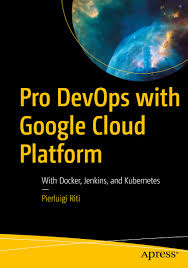White Paper: Continuous Delivery with Docker, Jenkins, and Sustainable Engineering
Continuous Delivery (CD) is transforming the way software is developed and deployed by enabling rapid, reliable, and repeatable software releases. This white paper integrates key ideas from Rafal Leszko’s Continuous Delivery with Docker and Jenkins [1], Humble & Farley’s Continuous Delivery [6], and Armando Fox’s Engineering Long-Lasting Software [33], along with applied strategies from IAS-Research.com [3] and KeenComputer.com [4]. It also includes a SWOT analysis and examples demonstrating real-world success using CD tools like Docker and Jenkins.
Core Principles of Continuous Delivery
Continuous Delivery ensures software is always in a deployable state by automating build, test, and release processes [2][6]. Core components include:
- Automation: Automate testing, integration, and deployment to minimize errors and human intervention [1][6].
- Deployment Pipelines: Enable fast, repeatable deployments using Jenkins and Docker [1][5].
- Infrastructure as Code (IaC): Provision consistent environments with tools like Ansible and Terraform [1].
- Nonfunctional Testing: Integrate security, performance, and availability checks early in the pipeline [1][6].
- Software Sustainability: Armando Fox [33] emphasizes modularity, testability, and maintainability to create long-lasting software systems.
Why Docker and Jenkins?
Docker provides a standardized container runtime, while Jenkins acts as the orchestration hub for CD pipelines:
- Portability: Docker ensures the same application behavior from developer laptop to cloud.
- Modular Workflows: Jenkins’ pipeline-as-code enables complex workflows with stage-wise visibility.
- Scalability: Kubernetes integration enables Jenkins to launch and destroy Docker-based agents as needed.
- Security and Test Automation: Containers isolate vulnerabilities, and Jenkins ensures tests are executed continuously.
- Sustainability: Supports Fox’s principles by enabling robust test harnesses, modular design, and consistent builds [33].
IAS-Research.com: CD for Industrial IoT and Systems Engineering [3]
IAS-Research applies CD principles in high-complexity, full-stack engineering environments:
- End-to-End Automation: Jenkins pipelines deploy Docker containers that deliver embedded software and IoT analytics.
- Digital Twins and Predictive Analytics: Model-based engineering supports dynamic system calibration.
- Software Longevity: Modular architecture ensures RTOS applications evolve with hardware changes [33].
Use Case: Predictive Maintenance for Cold Storage Units
Using real-time sensor data and CD pipelines, IAS-Research reduced equipment downtime by 60% and improved energy efficiency using continuous model deployments.
KeenComputer.com: Lean Six Sigma for CD in SMB IT Environments [4]
KeenComputer integrates Lean Six Sigma with CD tools to boost SMB agility:
- Root Cause Analysis: Identifies bottlenecks in build/test/deploy workflows.
- Value Stream Optimization: Reduces time-to-release through targeted automation.
- Modularity and Testing: Applies Armando Fox’s sustainable design principles to ensure future-proof solutions [33].
Use Case: CI/CD for HIPAA-Compliant SaaS
KeenComputer automated delivery of a healthcare platform using Docker and Jenkins. Security and compliance testing were integrated into pipelines, enabling weekly releases with zero data breaches.
Comparative Table: IAS-Research vs. KeenComputer
| Dimension | IAS-Research | KeenComputer |
|---|---|---|
| Tooling | Jenkins, Docker, Kubernetes [1][3] | Jenkins, Docker, Lean Six Sigma [1][4] |
| Focus | High-complexity systems, embedded IoT [3] | SMB services, SaaS quality and cost [4] |
| Deployment Strategy | Digital Twins, RTOS CD pipelines [3] | HIPAA security and LSS optimization [4] |
| Software Longevity | Modular architecture and versioning [33] | Testability and maintainability focus [33] |
SWOT Analysis: Continuous Delivery with Docker and Jenkins
| Strengths | Weaknesses |
|---|---|
| High deployment velocity and reduced lead time [1] | Steep learning curve for tool integration |
| Portability across environments via containers [1] | Requires upfront investment in automation infrastructure |
| Strong community and open-source ecosystem | Complex to scale without orchestration tools like K8s |
| Facilitates modular, maintainable systems [33] | Security configurations require expert handling |
| Opportunities | Threats |
|---|---|
| Growing need for rapid software updates | Rapid tech evolution can make older tools obsolete |
| Integration with AI/ML pipelines for smart delivery | Compliance regulations (GDPR, HIPAA) may delay releases |
| Expansion into edge computing and IIoT [3] | Vendor lock-in with certain CI/CD platforms |
Benefits for Software Teams
- Time Efficiency: Pipelines cut release cycles from months to hours [1][2].
- Quality Assurance: Early and automated testing reduces bugs and technical debt [1][6].
- Cost Control: LSS practices optimize cloud spend and developer time [4].
- Sustainability: Architecting for change ensures future-ready systems [33].
Conclusion
By combining insights from leading authors, real-world use cases from IAS-Research and KeenComputer, and frameworks such as Lean Six Sigma and Engineering Long-Lasting Software, this paper shows how Docker and Jenkins-based CD can deliver not only high-speed deployment, but also resilient, adaptable, and business-aligned software systems.
References
[1] https://www.ebooks.com/en-gb/book/209696567/continuous-delivery-with-docker-and-jenkins/rafal-leszko/
[2] https://continuousdelivery.com
[3] https://www.ias-research.com
[4] https://www.keencomputer.com/solutions/303-white-paper-improving-quality-of-service-qos-in-it-software-engineering-for-keencomputer-com-financial-benefits-for-smb-customers-us-canada
[5] https://www.rafalleszko.com/books
[6] https://martinfowler.com/books/continuousDelivery.html
[33] https://engineeringlonglastingsoftware.org



